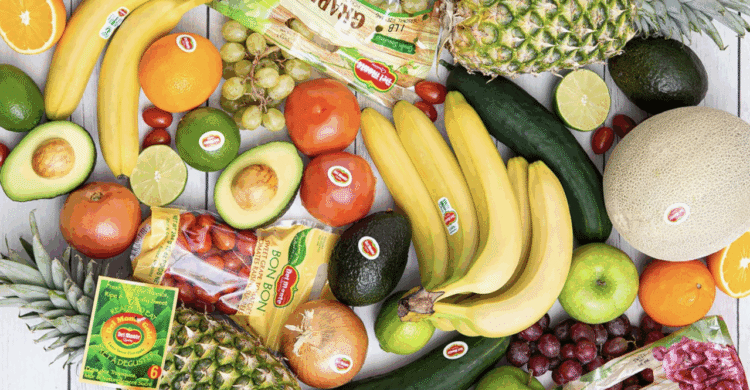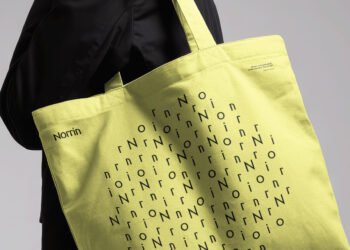Years of reorganizations, restructuring, buying and selling assets, and accumulating enormous debt have finally led to the downfall of one of America’s oldest brands, Del Monte. This past week, Del Monte filed for Chapter 11. Founded in 1886, Del Monte’s history spanned the miracle of canning, the pineapple fields in Hawaii (before Hawaii was a US State), coffee, pet foods, and more. Just read the dizzying facts about all the assets and sales on Wikipedia. Del Monte is one of the most recognizable labels on the grocery store shelf, but perhaps no more.
In all of the articles written about this iconic brand’s demise, the focus is Del Monte’s financial activities that placed Del Monte in its current precarious position: a skater’s death spiral on melting ice. As always, the maxim holds true: brands can live forever but only if properly managed. No happy ending for Del Monte, as of yet. Del Monte’s assets will most probably be sold.
This article is part of Branding Strategy Insider’s newsletter. You can sign up here to get thought pieces like this sent to your inbox.
To be clear, Fresh Del Monte Produce Inc. is not part of Del Monte Foods. Fresh Del Monte Produce operates using a license for the name on bananas, lettuce, pineapples, and other produce. What is not clear is the future of this license post-Chapter 11 and any negative brand blow-back or customer confusion. Fresh Del Monte Produce grows, ships, distributes, and sells fresh produce.
Del Monte Foods is a processing company. Del Monte Foods includes canned fruits, fruit cups, fruit juice, canned vegetables, frozen vegetables, soup, broth, sauce, bubble tea, and tomato paste.
As with many established, iconic brands, successful past actions and strategies can be hindrances to innovation and a barrier to keeping up with changing customer needs. Unfortunately for Del Monte, attitudes about and behaviors towards food have been a cauldron of change. Del Monte did not stay relevant.
Think about how we currently perceive food.
1. Fresh is Fabulous
Foods prepared fresh every day; foods made fresh on the perimeter of the supermarket; fresh and chilled foods are the norm, no longer mere growth opportunities. Subway makes fresh a core attribute of their brand even though the sandwiches are just freshly assembled.
Farmers’ markets are mainstays of towns all over America. Government and other data indicate that there are over 8,700 farmers’ markets dotting our landscape. From West Palm Beach, Florida to Long Lake, NY to Wallingford and Ballard, Washington, farmers markets are spring and summer mainstays.
Fresh is relative, however. Our understanding of fresh is not simple to define. Fresh is not as easy to determine as we might prefer. Food travels. Distributing fresh food is a race against time, even with refrigerated trucks. Some fruits – like bananas and pineapples – are picked green, chilled and then warmed to ripen. The more we desire “off-season” fresh items, the more conscious we are of the distance these foods have traveled. One can buy US grown lemons year round, but not limes.
Packaging plays a role. Packaging can make foods look and stay fresh longer. When McDonald’s offered Apple Dippers (apple slices with a side of caramel sauce), it was the packaging that kept the apple slices from turning brown.
Del Monte is generally associated with canned goods, a convenience that has undergone a monumental change.
2. Convenience is Critical
As a part of these changed attitudes and behaviors, “fast food” is now a derogatory term. Which is a shame. As Steve Ells, the founder of Chipotle once said, “There is nothing wrong with making food fast. It is the food that is the problem.”
Convenience is not just convenience anymore. “Convenience” means more than making life easy. Convenience also means “putting your mind at ease”.
No functional and no emotional hassle. No time, no fuss, no worry. No questions as to whether or not I am doing the right thing.
Ease of mind. Convenience requires ease of mind.
Convenience means mind-soothing, quick fix entrees and side dishes requiring little preparation but healthy. Flavors, exotic add-ins, do-it-yourself doctoring in accordance with diets aimed at reducing blood pressure or cholesterol and farm friendliness… a preference for foods deemed closer to the farm.
Keep in mind that the original Latin meanings for convenient are utilitas or commoditatis… advantageous to me, fitness, benefit, comfort. Ease of use and ease of mind for the consumer and for the provider
For Del Monte, the idea of convenience as more than fast and easy may not have sunk into the management mindset. If the food is organic and available, if it is healthful and clean and locally grown, it is to my advantage. Really and truly fresh is convenient. Basically, the American consumer wants to maximize, not compromise. If the food is easy, affordable and good, we feel at ease and feel good about eating the food. Ease of use and ease of mind.
However, we do live in an uncertain and volatile world. Our world is filled with stress and social tension. Which brings us the overarching desire for comfort.
3. Comfort is Crucial
In an increasingly fast-paced, out of control, disordered, uncertain and often confusing world, there is a need for comfort. We have an innate, universal desire for physical and emotional safety and security.
We have experienced, and continue to experience, food scares. We have lost faith in institutions to provide this for us. US health officials say that food-borne bacteria cause 3.6 million illnesses a year: upwards of 53,300 hospitalizations and more than 900 deaths.
Comfort on all dimensions – physical comfort, mental comfort, even intellectual comfort – are top-of-mind. We do not want to feel stressed out or out of control. We do want to feel relaxed, reassured, recharged and revitalized.
Comfort means feeling safe, having knowledge, well-being, sustainable, authentic. It is comforting to know that we can feel comfortable with the food and beverage products we eat. It is comforting to know that our food and beverage products are safe to eat and drink.
Again, and unfortunately for Del Monte, prepared and processed have become derogatory words. Canning somehow moved from a modern miracle to products that should be used with discretion.
4. Good words – Bad Words
Think about this: all-natural, unprocessed, raw, organic, natural, clean, real, raw, pure, not genetically modified, unprocessed foods: these are the best words.
Think of what that leaves as the alternative: unnatural, unclean, unreal, genetically tampered, chemically-tainted, impure, processed foods.
When did “processing” become a bad word? When processing is what makes food convenient, increases safety, and value, how did “processed” become a bad idea?
People say they want prepared foods that are not processed. But, prepared is processing. The “movement” has co-opted the best words. Organic, whole food, natural foods, clean foods, real foods, raw, unprocessed, not genetically modified, pure foods.
The facts are that unless you are actually picking the fruit or vegetable from the earth, foods go through some sort of processing. Milling grains is processing. Canning tomatoes or making jams at home are processing.
Canning is a form of food preservation. Since the 1800s, armies have relied on canned foods. Preppers, ready for the apocalypse, have stores of preserved foods. John Steinbeck used the canning industry in Monterey, California, as the backdrop for two of his novels, where canning was a way of making a living and a way of life.
Let’s not forget that weight loss drugs, pricing hikes, a renaissance of own-label brands, and other food movements are affecting powerful food consumption changes.
Whatever the reasons, Del Monte has suffered not just from ongoing financial shenanigans but from a changing world that the brand did not adequately address. True, there was a surge for canned foods during the pandemic. However, Del Monte indicates that the brand overproduced, resulting in excess inventory. There is also the fact that grocery own-brands siphoned away shoppers from Del Monte branded items due to price concerns. Why buy Del Monte when I can purchase the same quality from Whole Foods 365 or Kroger’s Simple Truth or Private Selection?
Both The New York Times and The Wall Street Journal gave lip service to the concepts of our changing food attitudes and behaviors in reporting on the Del Monte bankruptcy. This is a shame. The fall of Del Monte has a lot to do with how we eat, how we want to eat and how we perceive canned foods. We will eat canned kidney beans but canned green beans are considered soggy alternatives.
Del Monte has an opportunity to communicate to customers; to arm them, not alarm them with the proper food knowledge so consumers can be comfortable without being cautious; so that people can enjoy what they choose to eat knowing they have made the right choices.
The times are changing and brands have to change with the times. Consumer demands are changing and consumers continue to demand change.
Processing will not disappear. People will not buy a cow or whole chickens. Not everyone has access to a garden or a farmers’ market. We still have areas in America where there is no access to fresh foods, food deserts.
But, the meaning of processed has changed.
Del Monte had the opportunity to turn processing as making food bad into processing as making food better providing ease of use and ease of mind.
Del Monte’s mission, as expressed by its CEO is admirable and viable: “We remain committed to our mission of expanding access to nutritious, great-tasting food for all.”
Contributed to Branding Strategy Insider by: Joan Kiddon, Partner, The Blake Project, Author of The Paradox Planet: Creating Brand Experiences For The Age Of I
At The Blake Project, we help clients worldwide, in all stages of development, define and articulate what makes them competitive at pivotal moments of change. Please email us to learn how we can help you compete differently.
Branding Strategy Insider is a service of The Blake Project: A strategic brand consultancy specializing in Brand Research, Brand Strategy, Brand Growth, and Brand Education
Post Views: 25


















